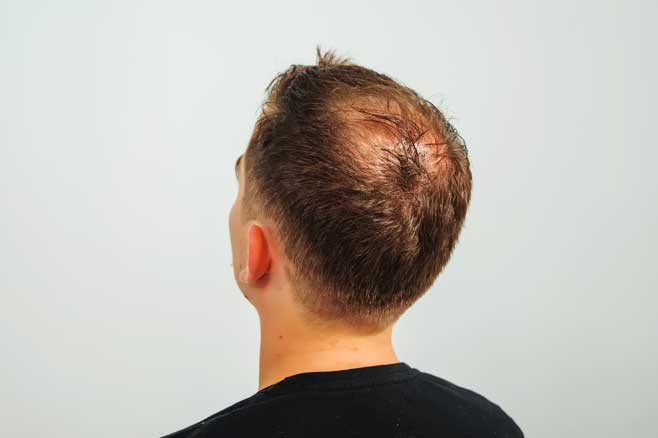HAIR FALL
It’s normal to lose some hair from your scalp each day. But if your hair is thinning or shedding faster than usual, you may be balding. Balding occurs due to excessive hair loss from the head. The term “balding” is most commonly used to refer to androgenetic alopecia, or male or female pattern hair loss.
What causes balding?
- Androgenetic alopecia – typically causes balding. In men, it’s more commonly known as male pattern baldness. And in women, it’s known as female pattern baldness. It is responsible for 95% of cases of permanent hair loss.
- Genetics – Hereditary disorders or genes are the most common cause of balding
- Alopecia areata – An autoimmune disease where the body attacks its own hair follicles can lead to balding.
- Telogen effluvium – linked to stress most likely causing hair damage. The stress causes large numbers of hair follicles into a resting or dormant phase. This hair can fall out over a period of a few months causing balding.
- Hormonal imbalance – hypothyroidism, hyperthyroidism, during pregnancy, and childbirth, menstruation can lead to hair fall and balding.
- Nutritional deficiencies can also cause balding.

Treatment for Balding
Depending on the reason for your hair breakage, a treatment plan would be recommended to you by our experts. At PHI Clinic, we offer treatment plans that are holistic in nature; meaning, not only do we offer clinical treatments, but we also help you understand the lifestyle and dietary changes you’d need to sustain the treatment plans, as well as prescribe medications when necessary. Some of the procedures that we offer to combat hair loss are:
- Multivitamins Healthy hair is dependent on your overall good health. In cases of malnourishment, or with certain eating disorders, new hair may fail to generate from follicles. Healthy hair needs iron, folic acid, and zinc to keep growing thick and strong.
- Hair regrowth treatment is a treatment that stimulates hair follicles, strengthens the hair shaft, and is great for hair thinning, hair fall, or baldness
- Hair restoration is also a non-surgical procedure that could be done as an alternative to a hair transplant.
- Micro-needling for hair is a procedure that stimulates collagen production, brings proper blood flow to the roots, and encourages hair growth.
- Scalp peel is a great non-surgical procedure for damaged hair that provides a boost to hair growth by deep conditioning your scalp, removing dead skin particles, dirt, debris, and residue of cosmetic, beauty products.
- Laser hair induction or Low-Level Laser Therapy (LLLT), is a non-invasive procedure that uses FDA-approved light technology which helps stimulate hair follicles and gives a boost to regrowth of thicker, more voluminous hair.
- Hair transplant, in simple terms, is, taking the hair you have and transferring it to an area where you don’t have hair. It’s typically taken from the back of your head, but can also be taken from other parts of your body. Our expert surgeon then performs one of two transplant methods: FUT or FUE. For details, read our comprehensive description of Hair transplant treatment.
To determine the exact procedure required for your hair needs and to understand what the procedure actually entails, reach out to us and one of our experts will guide you through the process, step-by-step.
